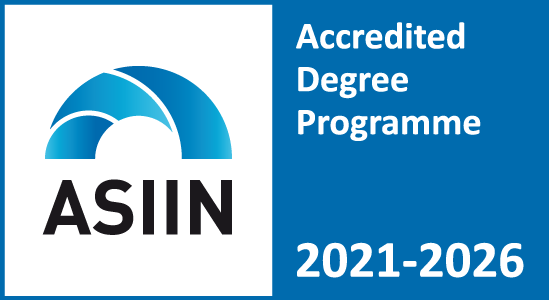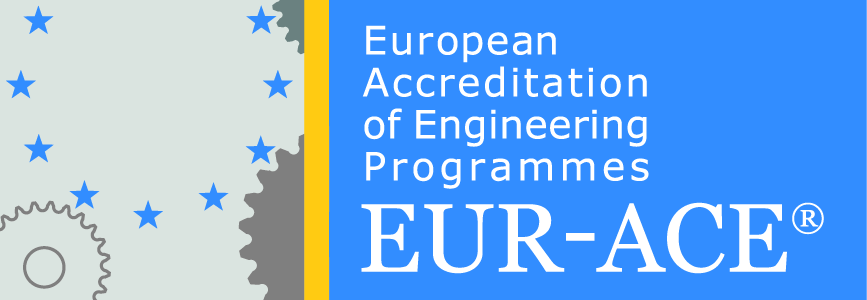| 1. | Course Title | Techniques for Designing Dedicated Computer Systems | |||||||||||||||
| 2. | Code | 4ФЕИТ07017A | |||||||||||||||
| 3. | Study program | Dedicated Embedded Computer Systems and Internet of Things | |||||||||||||||
| 4. | Organizer of the study program (unit, institute, department) | Faculty of Electrical Engineering and Information Technologies
Ss. Cyril and Methodius University in Skopje |
|||||||||||||||
| 5. | Degree (first, second, third cycle) | Second cycle | |||||||||||||||
| 6. | Academic year/semester | Year | I | Semester | 1 | ||||||||||||
| 7. | Workload measured by number of ECTS credits | 6 | |||||||||||||||
| 8. | Lecturer (In case of several lecturers to note the responsible one) | Dr. Danijela Efnusheva | |||||||||||||||
| 9. | Language of teaching | English | |||||||||||||||
| 10. | Course Prerequisites | None | |||||||||||||||
| 11. | Course Goals (acquired competencies) and study results:
Acquiring knowledge, methods and techniques for development of dedicated system on chip, integrated circuits and components. Design of platform specific components (network, video interface, wireless communication). After the competition of the course the students would be capable to design and implement dedicated computer systems. |
||||||||||||||||
| 12. | Course Syllabus (with Chapters) and study results for each chapter:
1. Introduction to dedicated computer systems. History and overview of embedded dedicated systems. (to describe history and elements of dedicated computer systems) 2. Designing System-on-Chip. Architecture of embedded computer systems. Models and methodologies of system design. Distribution between hardware and software. Design of dedicated computer systems. (to know and understand the elements dedicated computer systems design) 3. Modeling and Simulation of Systems-on-Chip. Functional-architectural co-design. Design based on destination platform. Mapping Architecture. (apply different architectural designs) 4. Languages for hardware description. (Verilog HDL, VHDL, SystemC). Design verification and testability of embedded systems. System on Chip (SoC) and IP-cores. Using IP-cores for designing system-on-chip. Techniques for designing energy-efficient and green dedicated and standard computer systems. (to use HDL design languages and IP-cores, to understand the importance and to apply the elements for energy-efficient design of dedicated systems) 5. Standard Input/Output. Serial Communication (I2C, SPI IrDA, Uarts). Analog Input/Output. 8-bit and 16-bit micro-controllers, memory, Input/Output, assembly programming. (to implement and apply microcontrollers for dedicated embedded systems) 6. Computer networks in industrial conditions. Applications in industrial conditions. Real time operation. (to understand and describe the specifics of system design for industrial operation) 7. Hardware-software interfaces and reconfigurable computing. Design of communication for embedded computer systems. Designing energy-efficient computer systems with very high computational power. 8. Synthesis of interfaces. Languages for description of digital electronic assemblies. Environments for the design and development of digital integrated circuits. Practical examples for designing integrated circuits. (to use the environments for practical design of integrated circuits) |
||||||||||||||||
| 13. | Interconnection of Courses
This course is the basis and it is complementing the following courses: Techniques for HDL Design and FPGA Implementation, Contemporary Microcontrollers for Embedded Systems Design, From Microelectronics to Nanoelectronics, System Design Concepts for the Internet of Things, Dedicated Processors and some other elective courses. Most of these courses need the knowledge regarding the essential elements for dedicated system design in order to deepen the knowledge for HDL and FPGA Design, Microcontollers for embedded design, dedicated processors and application into the IoT area. |
||||||||||||||||
| 14. | Detailed description of teaching and work methods:
Lectures, independent learning, independent work on project tasks and preparation of seminar papers. |
||||||||||||||||
| 15. | Total number of course hours | 180 | |||||||||||||||
| 16.
|
Forms of teaching
|
16.1 | Lectures-theoretical teaching | 45 hours
|
|||||||||||||
| 16.2 | Exercises (laboratory, practice classes), seminars, teamwork | 45 hours
|
|||||||||||||||
| 16.3 | Practical work (hours): | 20 hours | |||||||||||||||
| 17.
|
Other course activities
|
17.1 | Projects, seminar papers | 45 hours | |||||||||||||
| 17.2 | Individual tasks | 0 hours | |||||||||||||||
| 17.3 | Homework and self-learning | 25 hours | |||||||||||||||
| 18. | Conditions for acquiring teacher’s signature and for taking final exam: 60% of all required course activities | ||||||||||||||||
| 19. | Grading | ||||||||||||||||
| 19.1 | Quizzes | 30 points | |||||||||||||||
| 19.2 | Seminar work/project (presentation: written and oral) | 50 points | |||||||||||||||
| 19.3 | Final Exam | 20 points | |||||||||||||||
| 20. | Grading criteria (points) | up to 50 points | 5 (five) (F) | ||||||||||||||
| from 51 to 60 points | 6 (six) (E) | ||||||||||||||||
| from 61 to 70 points | 7 (seven) (D) | ||||||||||||||||
| from 71 to 80 points | 8 (eight) (C) | ||||||||||||||||
| from 81 to 90 points | 9 (nine) (B) | ||||||||||||||||
| from 91 to 100 points | 10 (ten) (A) | ||||||||||||||||
| 21. | Method of monitoring of teaching quality | Self-evaluation and student surveys | |||||||||||||||
| 22. | Literature | ||||||||||||||||
| 22.1. | Required Literature | ||||||||||||||||
| No. | Author | Title | Publisher | Year | |||||||||||||
| 1. | Mark Balch | Complete Digital Design | McGraw-Hill | 2000 | |||||||||||||
| 2. | Sarah L. Harris, David Harris | Digital Design and Computer Architecture RISC-V Edition | Morgan Kaufman | 2021 | |||||||||||||
| 3. | Matt Gilliland | The Microcontroller Application Cookbook | Woodglen Press | 2000 | |||||||||||||
| 22.2. | Additional Literature | ||||||||||||||||
| No. | Author | Title | Publisher | Year | |||||||||||||
| 1. | Wayne Wolf | Modern VLSI Design: IP-Based Design 4th Edition | Prentice Hall | 2009 | |||||||||||||



